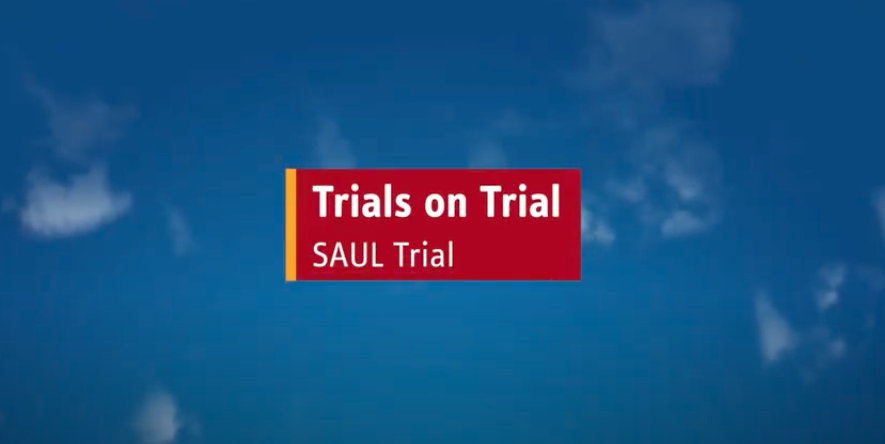Dr Neal Shore (Carolina Urologic Research Center, USA) presented the outcomes of the papillary disease (PD) cohort from the trial [1]. Nadofaragene firadenovec is a novel intravesical-administered adenovirus-mediated gene therapy (rAd-IFN) delivering the human interferon (IFN) α2b gene. When combined with the excipient Syn3, rAd-IFN/Syn3 has been shown in a phase 2 trial to be well tolerated and leads to sustained localised IFNα2b gene expression.
The phase 3 trial enrolled 157 patients (mean age 71 years), 50 of whom had PD. Intravesical administration of nadofaragene firadenovec (3×1011 viral particles/mL [75 mL]) was planned every 3 months for up to 4 doses during 12 months. All patients with an absence of high-grade disease recurrence at month 12 were offered continued treatment every 3 months. The primary endpoint was complete response (CR) at any time in the carcinoma in situ cohort (CIS ± Ta/T1, or PD [Ta/T1 alone]) unresponsive to BCG. Key secondary endpoints included the rate and durability of high-grade recurrence-free survival as well as safety in patients with PD.
The primary endpoint was met; 55 patients in the CIS cohort (n=103) achieved CR during the 12-month period (53.4%; 95% CI 43.3-63.3; see Figure). The total cohort (n=151) had 59.6% CR, whereas 72.9% of the PD subgroup (n=48) achieved CR. All CRs occurred in the first 3 months. Patients with CIS demonstrated 24.3% HGRF survival at month 12, compared with 43.8% of PD patients. In PD patients, the median duration of HGRF survival was 12.35 months (95% CI 6.67, months-not reached).
Figure: Primary endpoint analysis: complete response in patients with carcinoma in situ [1]

CIS, carcinoma in situ; HGRF, high-grade recurrence-free.
Figure kindly provided by Dr Shore.
The most common drug-related treatment-emergent adverse events were instillation site discharge (33.1%), fatigue (23.6%), bladder spasm (19.7%), micturition urgency (17.8%), and haematuria (16.6%). No patient died.
In short, nadofaragene firadenovec demonstrated clinical response in patients with high-grade BCG-unresponsive NMIBC for both CIS and PD cohorts. Responses remained durable for at least 1 year, and the safety profile and dosing schedule were acceptable. “These data represent a significant therapeutic advancement for BCG-unresponsive patients,” concluded Dr Shore.
- Shore N, et al. EAU20 Virtual Congress, 17-26 July 2020, Game-Changing Session 2.
Posted on
Previous Article
« Understanding MIBC biology for novel treatment options Next Article
Reduced BCG frequency, faster NMIBC recurrence »
« Understanding MIBC biology for novel treatment options Next Article
Reduced BCG frequency, faster NMIBC recurrence »
Table of Contents: EAU 2020
Featured articles
Surgical Techniques and Safety
The new adjustable artificial sphincter victo: Surgical technique and results after a follow-up of more than one year
New urosepsis data from the SERPENS study
Stones
Intra-operative cone-beam computed tomography for detecting residual stones in percutaneous nephrolithotomy
Pressure and temperature: do high-power lasers pose a threat?
Radiation stewardship for patient and endourologist
New lithotripter data: improved stone clearance
Renal Cancer
Beyond the limits of ultrasound: Three dimensional augmented reality robot assisted partial nephrectomy (3D AR-RAPN) for complex renal masses
Imaging guided surgery with augmented reality for robotic partial nephrectomy
KEYNOTE-426: no QoL differences pembrolizumab + axitinib versus sunitinib
Debate: upfront cytoreductive nephrectomy or not?
Robotic-assisted partial nephrectomy: lower morbidity
Bladder Cancer
Reduced BCG frequency, faster NMIBC recurrence
Nadofaragene firadenovec effective in BCG-unresponsive papillary NMIBC
Understanding MIBC biology for novel treatment options
Prostate Cancer & Imaging
Transperineal laser ablation of prostate
Prostatectomy: R-LRPE better than LRPE for continence
PSMA PET-CT staging is 27% more accurate
Docetaxel + hormonal therapy: improved prostate cancer PFS
ARAMIS subgroup analysis: darolutamide benefits across PSADT groups
Large patient-driven survey reveals QoL issues after prostate cancer treatment
Targeting steroid sulphatase in resistant prostate cancer cells
Good tolerance of post-RP radiotherapy ± short-term ADT
BPH & LUTS
Minimizing post-operative stress urinary incontinence after HoLEP: Our preliminary experience and short-term results of ‘’En Bloc’’ technique with early apical release
LUTS 2-year outcomes: aquablation versus TURP
HoLEP versus PVP in prospective randomised trial
Testis Cancer & Andrology
Peyronie’s disease: surgical options
Infertility and testis cancer risk: causal or association?
32% more men complain of reduced sex drive in 2019 versus 2009
Related Articles

May 21, 2019
Renal cell carcinoma

© 2024 Medicom Medical Publishers. All rights reserved. Terms and Conditions | Privacy Policy
HEAD OFFICE
Laarderhoogtweg 25
1101 EB Amsterdam
The Netherlands
T: +31 85 4012 560
E: publishers@medicom-publishers.com

